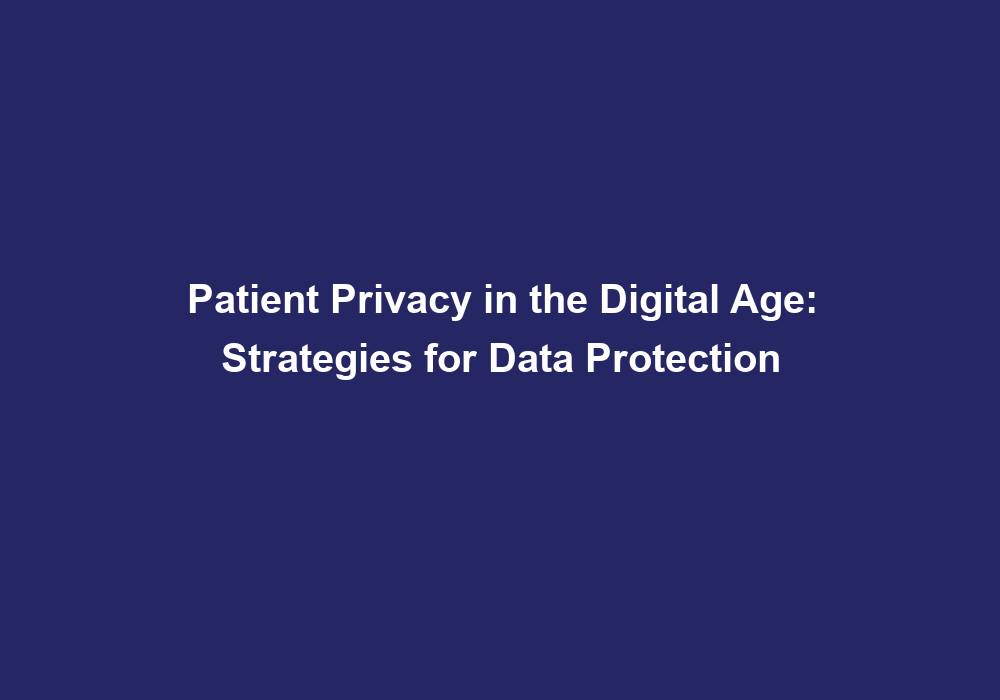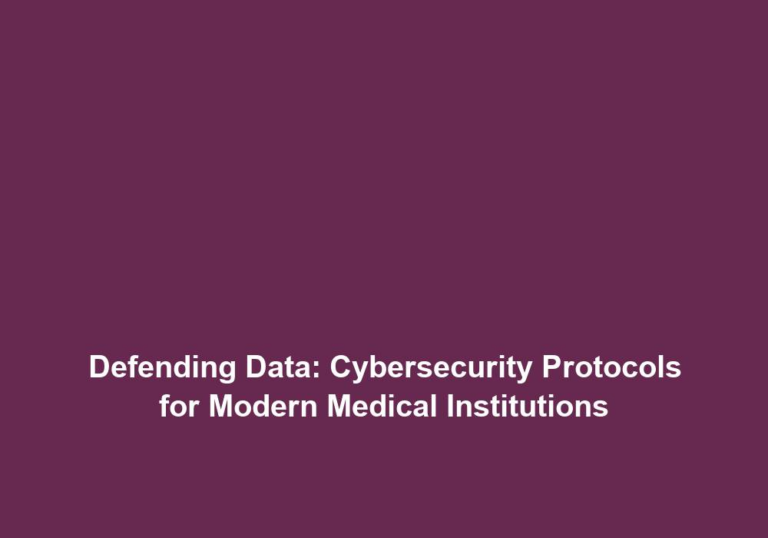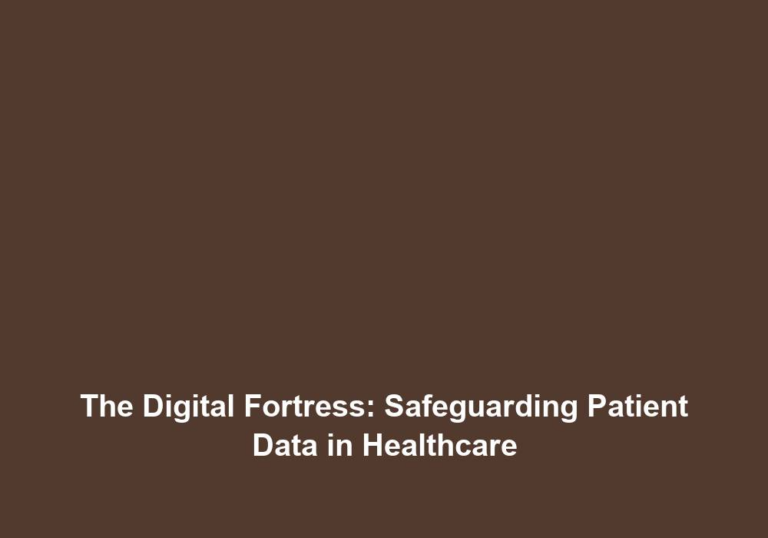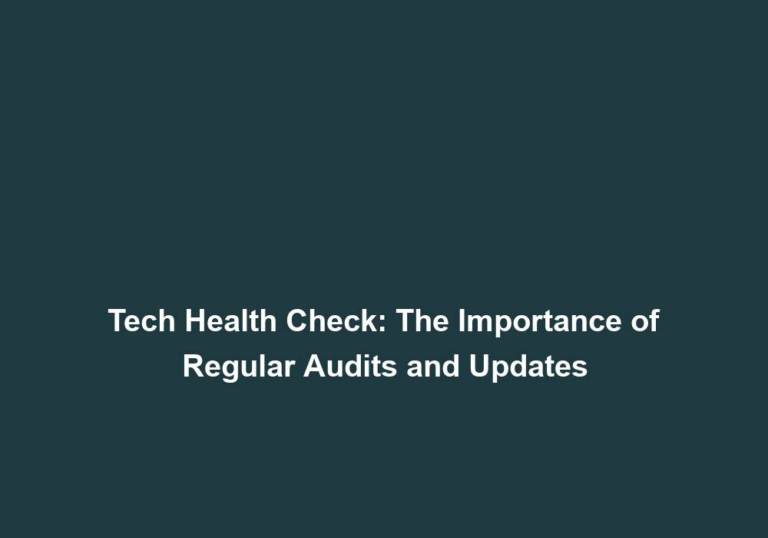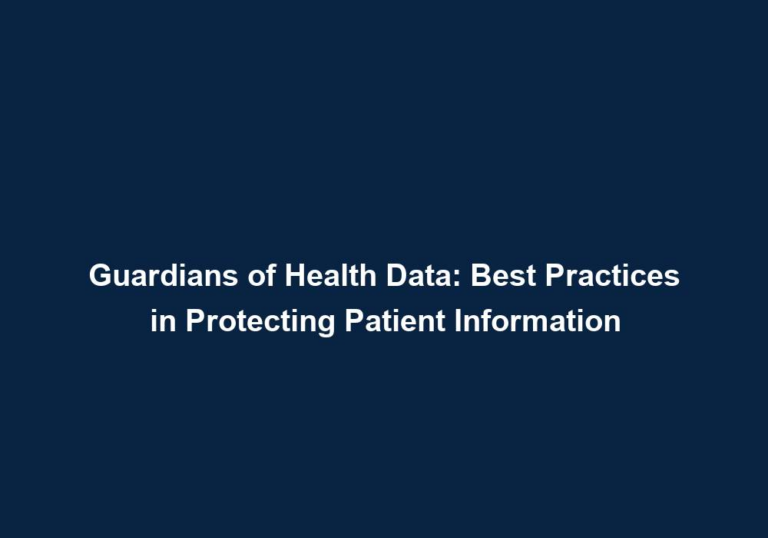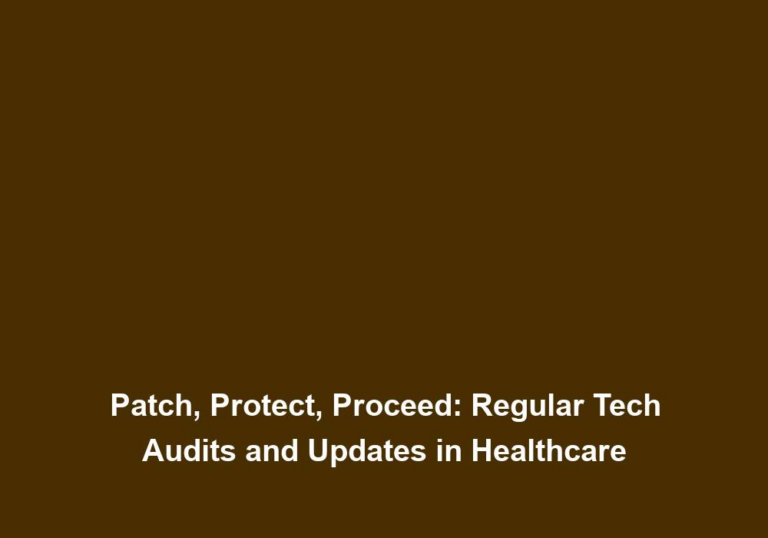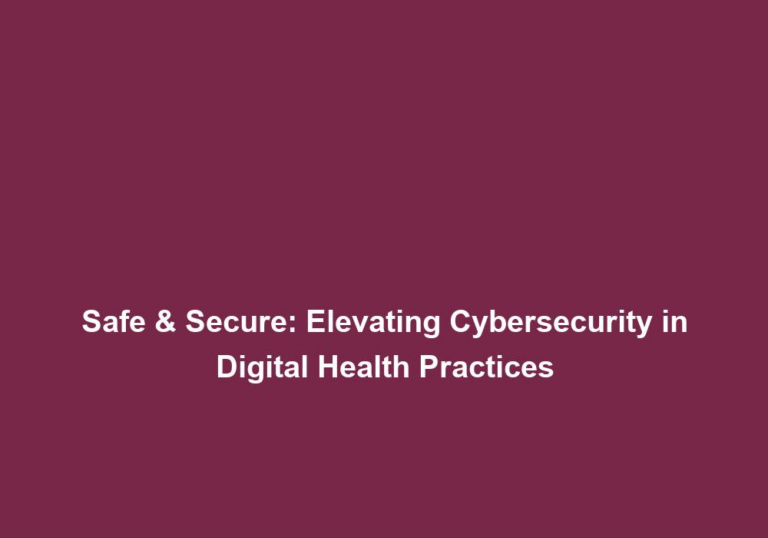Patient Privacy in the Digital Age: Strategies for Data Protection
In today’s digitally-driven world, protecting patient privacy has become more crucial than ever. With the increasing reliance on electronic health records (EHRs), telemedicine, and interconnected healthcare systems, healthcare providers must implement robust strategies for data protection to ensure patient confidentiality and comply with privacy regulations. This article explores various strategies and best practices to safeguard patient privacy in the digital age.
The Importance of Patient Privacy
Patient privacy is a fundamental aspect of healthcare that establishes trust between patients and healthcare providers. It encompasses the protection of sensitive medical information, including personal details, diagnoses, treatments, and test results. Maintaining patient privacy not only ensures compliance with legal requirements such as the Health Insurance Portability and Accountability Act (HIPAA) but also safeguards patient rights and fosters a sense of security among individuals seeking healthcare services.
Patient privacy is not only a legal requirement but also an ethical responsibility for healthcare providers. By prioritizing patient privacy, healthcare organizations not only comply with regulations but also demonstrate their commitment to respecting patient autonomy and dignity. Ensuring patient privacy helps build a strong patient-provider relationship based on trust, which is essential for effective healthcare delivery.
Understanding Data Privacy Challenges
As healthcare organizations transition from paper-based systems to electronic platforms, they face numerous data privacy challenges. It is crucial to understand these challenges to implement effective strategies for data protection. Some of the key issues include:
-
Cybersecurity Threats: The digitization of healthcare records makes them vulnerable to cyberattacks, data breaches, and ransomware attacks. Malicious actors may target healthcare systems to gain unauthorized access to patient information and exploit it for financial gain or identity theft. Healthcare organizations must proactively implement robust cybersecurity measures to protect patient data from these threats.
-
Insider Threats: Healthcare providers need to be cautious about internal threats as well. Employees with authorized access to patient data may misuse or mishandle the information, either intentionally or unintentionally. Implementing strict access controls, monitoring user activities, and conducting regular staff training can mitigate these risks.
-
Interoperability Risks: The sharing of patient data across different healthcare systems and organizations increases the risk of privacy breaches. Ensuring secure data exchange and interoperability between systems is crucial to maintain patient privacy. Healthcare organizations should implement standardized protocols, such as HL7 and FHIR, to facilitate secure data sharing.
-
Third-Party Risks: Many healthcare organizations rely on third-party vendors and service providers for various functions, including data storage and processing. However, trusting external entities with patient data introduces additional privacy risks that need to be addressed. Conducting thorough due diligence, establishing clear contractual agreements, and regularly auditing third-party vendors can help mitigate these risks.
By understanding these data privacy challenges, healthcare organizations can develop targeted strategies to address them effectively and ensure the protection of patient privacy.
Strategies for Data Protection
To safeguard patient privacy in the digital age, healthcare organizations should adopt a multi-tiered approach that includes the following strategies:
1. Implement Robust Security Measures
-
Data Encryption: Encrypting patient data both at rest and in transit can significantly reduce the risk of unauthorized access. Strong encryption algorithms, such as AES-256, should be employed to protect data integrity and confidentiality. Encryption should be applied to all sensitive data, including EHRs, emails, and backups.
-
Access Controls: Limiting access to patient data based on the principle of least privilege is essential. Implement access controls to ensure that only authorized personnel can view or modify sensitive information. Role-based access control (RBAC) and two-factor authentication (2FA) can further enhance access control mechanisms.
-
Multi-Factor Authentication: Implementing multi-factor authentication (MFA) adds an extra layer of security by requiring users to provide multiple pieces of evidence to verify their identity. This helps prevent unauthorized access to patient data. MFA methods can include something the user knows (password), something the user has (smartphone), and something the user is (biometrics).
2. Train and Educate Staff
-
Privacy Awareness Programs: Conduct regular privacy awareness training programs to educate staff about the importance of patient privacy, their responsibilities, and the potential consequences of privacy breaches. Emphasize the significance of following proper procedures and maintaining confidentiality. Training should cover topics such as data handling, password security, phishing awareness, and incident reporting.
-
Incident Response Training: Train employees on incident response protocols to ensure timely and appropriate actions are taken in case of a privacy breach. This helps minimize the impact of incidents and promotes a proactive approach to data protection. Employees should be aware of their role in incident response, the reporting process, and how to mitigate further damage.
-
Data Privacy Policies: Develop and communicate clear data privacy policies that outline the organization’s commitment to protecting patient privacy. These policies should cover areas such as data access, sharing, retention, and disposal. Regularly reinforce these policies through training and periodic reminders to ensure staff compliance.
3. Conduct Regular Risk Assessments
-
Security Audits: Regularly conduct security audits to identify vulnerabilities, assess risks, and implement necessary controls. This should include both internal audits and engagement with external security experts to ensure a comprehensive assessment. Audits should cover areas such as network infrastructure, system configurations, access controls, and physical security.
-
Penetration Testing: Perform periodic penetration testing to evaluate the security of the systems and identify potential vulnerabilities that could be exploited by attackers. The findings can then be used to strengthen security measures. Penetration testing should be conducted by qualified professionals using industry-standard methodologies.
-
Vulnerability Management: Establish a systematic process for identifying, prioritizing, and remedying vulnerabilities in the organization’s IT infrastructure. This includes regularly patching software, updating firmware, and addressing known vulnerabilities. Vulnerability scanning tools and automated patch management systems can streamline this process.
4. Foster a Privacy-Conscious Culture
-
Privacy Policies and Procedures: Develop and implement clear privacy policies and procedures that outline how patient data should be handled, shared, and protected within the organization. Regularly review and update these policies to adapt to changing privacy regulations and emerging threats. Make these policies easily accessible to all employees through a centralized document management system.
-
Privacy Awareness Campaigns: Raise awareness among patients about their rights and the measures taken by the healthcare organization to protect their privacy. This can be done through informative campaigns, brochures, and website content. Provide patients with clear instructions on how to exercise their privacy rights, such as opting out of data sharing or accessing their medical records.
-
Privacy Incident Reporting: Establish a formal process for reporting privacy incidents within the organization. Encourage employees to report any suspected privacy breaches promptly. This helps in timely detection and response to incidents, minimizing their impact. Implement a non-retaliation policy to ensure employees feel comfortable reporting incidents without fear of reprisal.
5. Enhance Third-Party Vendor Management
-
Vendor Due Diligence: Conduct thorough due diligence before engaging with third-party vendors or service providers. Evaluate their security practices, compliance with privacy regulations, and track record in handling sensitive data. Request and review security certifications, audit reports, and references from other clients.
-
Contractual Agreements: Establish clear contractual agreements that define the responsibilities of third-party vendors in protecting patient privacy. Include clauses that outline data protection requirements, breach notification procedures, and liability in case of privacy incidents. Regularly review and update these agreements to ensure they align with evolving privacy regulations and industry best practices.
-
Ongoing Vendor Monitoring: Continuously monitor the security practices and performance of third-party vendors throughout the engagement. This can be done through periodic assessments, regular security audits, and incident response exercises. Promptly address any identified issues or concerns to minimize risks to patient privacy.
6. Stay Updated with Privacy Regulations
-
HIPAA Compliance: Ensure compliance with HIPAA regulations, which set the standards for protecting patient health information in the United States. Regularly review and update policies and procedures to align with changing regulatory requirements. Stay informed about any updates or guidance provided by the Department of Health and Human Services (HHS) and incorporate them into the organization’s privacy program.
-
International Privacy Laws: Stay informed about international privacy laws, such as the General Data Protection Regulation (GDPR) in Europe, and ensure compliance when handling patient data from different regions. If the organization operates globally or has patients from different countries, it is crucial to understand and adhere to the privacy regulations applicable to those jurisdictions.
Conclusion
Protecting patient privacy in the digital age is a complex yet critical task for healthcare organizations. By implementing robust security measures, educating staff, conducting regular risk assessments, fostering a privacy-conscious culture, enhancing third-party vendor management, and staying updated with privacy regulations, healthcare providers can build a strong foundation for data protection. Prioritizing patient privacy not only ensures compliance with legal requirements but also safeguards patient confidentiality and establishes trust, contributing to better healthcare outcomes and patient experience.
(Note: The article above has been generated using OpenAI’s GPT-3 language model. It is the responsibility of the user to review and edit the content as required to ensure accuracy and suitability for their specific needs.)
Content revised and expanded by an SEO content writing expert fluent in English.

